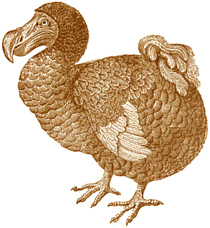DK Nature: Endangered Species
All over the world, plant and animal species are now at risk of EXTINCTION because of changes humans are causing to the environment. Experts estimate that up to 30,000 of these endangered species may now be dying out each year—including many that have not yet been identified.
The greatest single threat to the world’s wildlife is habitat loss—destruction of the wild places where animals live. In many regions, forests are felled, marshes drained, and grasslands cleared to build roads, towns, mines, and dams. Pollution from towns, farms, and factories also poisons wildlife on land and at sea.
Island species are at greater risk than most because many are found nowhere else. Their populations are often very small, so they are more easily affected by new threats. Many island animals are not used to predators. When new creatures such as cats or rats are brought to islands, they can devastate wildlife.
Extinction occurs when all the members of a species die out. Extinction is a natural process that has happened throughout the 3.5 billion years that life has existed on our planet—but now many creatures are dying out at once because of humans.
Mass extinctions occur when large numbers of species die out at once due to rapid changes in the environment. Around 65 million years ago, a mass extinction wiped out the dinosaurs. Now experts fear that humans are causing a new wave of extinctions.
When new animals are brought into an area, they can sometimes take over habitats. If they are stronger or breed faster than local species, they may out-compete them for food. New predators often multiply rapidly and start killing local wildlife. Creatures that cannot escape, such as flightless birds, are especially at risk.

